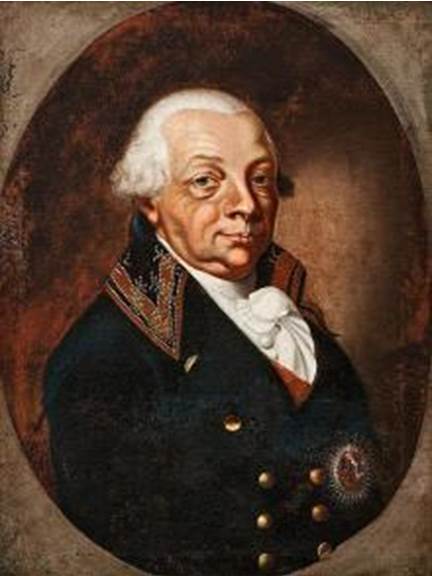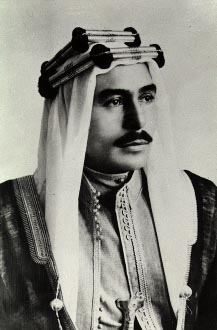by Susan Flantzer
- Captain The Honorable Patrick Julian Harry Stanley Ogilvy
- Timeline: October 1, 1917 – October 31, 1917
- A Note About German Titles
- October 1917 – Royals/Nobles/Peers/Sons of Peers Who Died In Action
********************
Captain The Honorable Patrick Julian Harry Stanley Ogilvy

Grave of Captain The Honorable Patrick Julian Harry Stanley Ogilvy on the right; Photo Credit – www.findagrave.com
Captain The Honourable Patrick Julian Harry Stanley Ogilvy was born June 26, 1896, at Cortachy Castle in Kirriemuir, Scotland. He was the third of the three sons and the youngest of the six children of David Ogilvy, 11th Earl of Airlie and Lady Mabell Gore, daughter of Arthur Gore, 5th Earl of Arran Some royalty aficionados may recognize the name Ogilvy. Patrick was the paternal uncle of The Honourable Sir Agnus Ogilvy who married Princess Alexandra of Kent, the granddaughter of King George V and the first cousin of Queen Elizabeth II.
Patrick had three elder sisters and two elder brothers:
- Lady Kitty Ogilvy (1887 – 1969), married (1) Brig.-Gen. Sir Berkeley Vincent, had two children who both died young in 1914, divorced 1925 (2) Lt.-Col. Ralph Gerald Ritson, no children
- Lady Helen Ogilvy (1890 – 1973), married (1) Major Hon. Clement Ogilvy Freeman-Mitford, had two daughters (2) Lt.-Col. Henry Brocklehurst, had one son, divorced 1931 (3) Lt.-Col. Harold Nutting, no children
- Lady Mabell Ogilvy (1892 – 1918), unmarried
- David Ogilvy, 12th Earl of Airlie (1893 – 1968), married Lady Alexandra Coke, had six children including The Honourable Sir Agnus Ogilvy who married Princess Alexandra of Kent
- The Honorable Bruce Arthur Ashley Ogilvy (1895 – 1976), married Primrose O’Brien, no children
When Patrick was four-years-old, his father 44-year-old David Ogilvy, 11th Earl of Airlie was killed in action at the Battle of Diamond Hill in Pretoria, Transvaal, South Africa on June 11, 1900, during the Second Boer War. The 11th Ear of Airlie was succeeded by his seven-year-old son David who became the 12th Earl of Airlie.
Patrick was educated at Wellington College, a boarding and day independent school located in Crowthorne, Berkshire, England. Many former Wellington students fought in the trenches during World War I right after finishing school, volunteering for military action. 707 of them, including Patrick, lost their lives. After Patrick finished Wellington, he matriculated in 1914 at Christ Church, Oxford. However, on October 6, 1914, two months after the start of World War I, 18-year-old Patrick enlisted and was commissioned as a Second Lieutenant in the Irish Guards.

The Irish Guards going up a communication trench. Elverdinghe, July 30, 1917; Photo Credit – Wikipedia
Patrick fought in the Battle of the Somme in Belgium, one of the bloodiest battles in human history. On September 25, 1916, he was awarded the Military Cross which is awarded for “an act or acts of exemplary gallantry during active operations against the enemy on land to all members, of any rank in Our Armed Forces”. Patrick’s commendation read: “For conspicuous gallantry in action. He led his company with great dash, and, on reaching the final objective, was the senior officer in the front line. He dealt with a difficult situation with great skill and determination, consolidating his position, and getting into touch with the battalions on his flanks. All this was carried out under heavy shellfire.” On July 22, 1917, Patrick was promoted to the rank of Captain.

Military Cross from 1916; Photo Credit – Wikipedia
The Battle of Passchendaele, also known as the Third Battle of Ypres, was a campaign of World War I, fought by the Allies against the German Empire on the Western Front in Belgium from July to November 1917. To commemorate the centenary, King Philippe and Queen Mathilde of Belgium, The Prince of Wales, The Duke and Duchess of Cambridge, and Vice Admiral Sir Timothy Laurence (husband of The Princess Royal) attended commemorations for the bloody battle on July 30-31, 2017 in Ypres, Belgium. An estimated half a million soldiers from both sides were killed or wounded.
During the Battle of Passchendaele, on October 9, 1917, 21-year-old Captain The Honourable Patrick Ogilvy was commanding No.1 Company of the 1st Irish Guard. During the previous night, Patrick and his men had marched through rain, mud, and crossed a river through three feet of water. Their objective was to reach the edge of the Houthulst Forest. There were some casualties from snipers in shell holes and enemy aircraft soared above them. The sniping got worse as the officers tried to form a flank on the right. Casualties among the officers were particularly heavy as they were conspicuous in organizing their men. Help from a counterattack never came. Eventually, a battalion of the Hampshires came up on the right. The Hampshires and the Irish Guards dug in as best they could and spent the night in the open among the shell holes, under constant artillery and sniper attack. Every company commander was killed or wounded. Patrick was one of those who was killed.
Captain The Honorable Patrick Ogilvy was buried at the Cement House Cemetery, a British military cemetery in the Belgian village of Langemark.

Cement House Cemetery; Photo Credit – Door Wernervc – Eigen werk, CC BY-SA 3.0, https://commons.wikimedia.org/w/index.php?curid=30314761
********************
Timeline: October 1, 1917 – October 31, 1917

The morning after the First Battle of Passchendaele, a sunburst through the clouds is shown against a landscape of destroyed land with a shell hole in the foreground; Photo Credit – Wikipedia
- October 4 – Battle of Broodseinde (second phase of the Third Battle of Ypres) in Broodseinde, Flanders, Belgium
- October 9 – Battle of Poelcappelle (last phase of the Third Battle of Ypres) in Poelcappelle, Flanders, Belgium
- October 12 – First Battle of Passchendaele (last phase of the Third Battle of Ypres) in Passendale, Belgium
- October 15 – 18 – Battle of Mahiwa in Mahiwa, German East Africa (now present-day Burundi, Rwanda, and the mainland part of Tanzania)
- October 23 – Battle of Wadi Musa in Wadi Musa, Jordan
- October 23 – November 10 – Battle of La Malmaison in La Malmaison, France
- October 24 – November 4 – Battle of Caporetto in Kobarid, Austria-Hungary (present day Slovenia)
- October 26 – November 10 – Second Battle of Passchendaele (last phase of the Third Battle of Ypres) in Passendale, Belgium
- October 27 – Battle of Buqqar Ridge in El Buqqar, Ottoman Syria (now in Israel)
- October 31 – November 7 – Third Battle of Gaza in Gaza, Palestine (now a Palestinian city in the Gaza Strip)
- October 31 – Battle of Beersheba (opening phase of the Third Battle of Gaza) in Beersheba, Ottoman Syria (now in Israel)
********************
A Note About German Titles
Many German royals and nobles died in World War I. The German Empire consisted of 27 constituent states, most of them ruled by royal families. Scroll down to German Empire here to see what constituent states made up the German Empire. The constituent states retained their own governments, but had limited sovereignty. Some had their own armies, but the military forces of the smaller ones were put under Prussian control. In wartime, armies of all the constituent states would be controlled by the Prussian Army and the combined forces were known as the Imperial German Army. German titles may be used in Royals Who Died In Action below. Refer to Unofficial Royalty: Glossary of German Noble and Royal Titles.
24 British peers were also killed in World War I and they will be included in the list of those who died in action. In addition, more than 100 sons of peers also lost their lives, and those that can be verified will also be included.
********************
October 1917 – Royals/Nobles/Peers/Sons of Peers Who Died In Action
The list is in chronological order and does contain some who would be considered noble instead of royal. The links in the last bullet for each person is that person’s genealogical information from Leo’s Genealogics Website. http://www.genealogics.org/index.php or to The Peerage website http://www.thepeerage.com If a person has a Wikipedia page or a website page with biographical information, their name will be linked to that page.
**********
2nd Lieutenant The Honourable Denis Bertram Sydney Buxton
- son of Sydney Buxton, 1st and last Earl Buxton and Mildred Smith
- born November 29, 1897 in London, England
- unmarried
- 2nd Lieutenant in the Coldstream Guards
- killed in action October 9, 1917 during the Battle of Passchendaele, age 19
- buried at Tyne Cot Cemetery near Passchendaele, West Flanders, Belgium
- http://www.thepeerage.com/p19649.htm#i196489
Note: Denis Bertram Sydney Buxton, was the third, but the only surviving, son of Viscount Buxton, later 1st Earl Buxton. Because the Earl’s three sons predeceased him, his titles became extinct upon his death.
**********
Captain The Honourable Patrick Julian Harry Stanley Ogilvy
(see article above)
- son of Lt.-Col. David Ogilvy, 11th Earl of Airlie and Lady Mabell Gore
- born June 26, 1896 at Cortachy Castle in Kirriemuir, Scotland
- unmarried
- Captain in the Irish Guards
- killed in action October 9, 1917 during the Battle of Passchendaele, age 21
- buried at Cement House Cemetery in Langemark-Poelkapelle, West Flanders, Belgium
- http://www.thepeerage.com/p1646.htm#i16459
**********
Private The Honorable Michael Francis Stafford Howard
- son of George Howard, 9th Earl of Carlisle and The Honourable Rosalind Stanley
- born January 23, 1880
- married 1911 Nora Hensman, had one son and one daughter; his son Lieutenant Eric Bertram Howard was killed during World War II by the Japanese after escaping from a prisoner of war camp and then being recaptured
- Private in the Honourable Artillery Company
- killed in action October 9, 1917 during the Battle of Passchendaele, age 37
- remembered on the Tyne Cot Memorial to the Missing near Passendale, West Flanders, Belgium
- http://www.thepeerage.com/p1303.htm#i13026
**********
Captain The Honorable Henry Simon Feilding
- son of Rudolph Feilding, 9th Earl of Denbigh and The Honorable Cecilia Clifford
- born June 29, 1894
- unmarried
- Captain in the Coldstream Guards
- killed in action October 9, 1917 during the Battle of Passchendaele, age 23
- http://www.thepeerage.com/p7608.htm#i76077
Note: His elder brother Lieutenant Commander The Honorable Hugh Cecil Robert Feilding was killed in action on May 31, 1916, age 29, when the HMS Defence sunk during the Battle of Jutland in the North Sea with the loss of all men on board.
**********




















